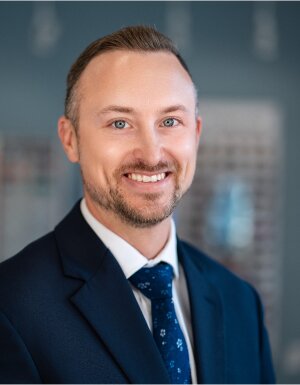Most people think of sports or industrial jobs when they hear “eye injuries,” but the truth is, almost half of all eye injuries in the U.S. happen at home. From DIY home improvement projects to everyday cleaning, your home is full of unexpected hazards that can put your vision at risk.
The good news? Nearly 90% of these injuries are preventable with the right eye protection. At VisionQuest Eyecare, we’re committed to helping families protect their sight, not just during annual eye exams, but during all of life’s activities, including the ones that happen in your garage, kitchen, or backyard.
Everyday Activities That Can Put Your Eyes at Risk
It only takes a second for a splatter of grease or a flying wood chip to cause serious damage. Here are common scenarios where eye protection should be non-negotiable:
- Home improvement: Drilling, hammering, sanding, or sawing can launch dust, debris, or sharp objects into the air.
- Cleaning chemicals: Household cleaners like bleach or oven spray can cause chemical burns if splashed into the eyes.
- Yard work: Mowers and trimmers can kick up rocks, dirt, or branches at high speeds.
- Cooking: Hot oil or grease can pop and splatter, causing burns or surface injuries to the eye.
- Champagne or carbonated bottles: The pressure from opening bottles can send corks flying at dangerous speeds.
- Garage projects: Power tools, solvents, or even bungee cords can pose a hidden threat.
Whether you’re tackling a full remodel or just cleaning the bathroom, your eyes deserve the same level of protection as your hands or feet.
Why Regular Glasses or Sunglasses Aren’t Enough
You might think your everyday glasses or sunglasses provide enough coverage, but they don’t. Most aren’t designed to handle high-speed impacts or chemical splashes.
To truly protect your eyes, you’ll want ANSI-approved protective eyewear—meaning it meets safety standards set by the American National Standards Institute. These include:
- Polycarbonate lenses that are lightweight and impact-resistant
- A snug, gap-free fit to prevent debris or dust from entering
- Wraparound designs that cover the sides of your eyes
If you wear prescription glasses, you can also invest in over-the-glasses (OTG) safety goggles or prescription safety eyewear tailored to your needs.
Eye Safety for Kids: Don’t Forget the Little Ones
Eye safety isn’t just an adult concern. Children watching or helping with home tasks can be at just as much risk, especially if they’re nearby during yard work, painting, or tool use.
Parents should:
- Provide child-sized safety goggles when appropriate
- Keep kids out of active work zones
- Store chemicals, tools, and sharp objects securely
If your child wears glasses, ask about impact-resistant lenses or sports-style goggles that double as protective eyewear. Preventive eye care is just as important at home as it is on the field. Learn more on our Pediatric Eye Care page.
Dry Eyes After DIY? Here’s What Might Be Happening
Spending hours in a dusty garage, near solvents, or using power tools can lead to dry, irritated eyes, especially in low-humidity environments like basements or workshops.
If you experience stinging, burning, or redness after home improvement projects, it might be more than just temporary irritation. Visit our Dry Eye Treatment page to learn how we can help relieve those symptoms and protect your eye health.
5 Quick Tips for At-Home Eye Protection
Here’s how to stay safe without overthinking it:
- Wear protective goggles or safety glasses for any task involving tools, chemicals, or debris.
- Use shields while cooking, especially when frying.
- Check lawns and workspaces for hazards like sticks, rocks, or loose cords before beginning a project.
- Direct spray bottles and nozzles away from your face and read chemical labels carefully.
- Avoid multitasking during high-risk activities, like carrying sharp tools while navigating stairs.
What to Do if an Eye Injury Happens
If an eye injury occurs at home:
- Do not rub the eye, even if it feels irritated.
- Flush with clean water if a chemical or dust has entered.
- Avoid trying to remove embedded objects on your own.
- Seek immediate medical care at an emergency room or urgent care center.
- Schedule a follow-up eye exam with VisionQuest Eyecare to ensure full recovery and assess any long-term effects.
We offer thorough Comprehensive Eye Exams for all ages, helping you get back on track after any eye trauma.
Your Eyes Deserve Protection Every Day
Protective eyewear isn’t just for the construction site. It’s a smart, simple way to safeguard your vision during everyday tasks that carry more risk than you might think.
Have questions about what protective eyewear is right for you or your family? Contact us at our Greenwood or Fishers location. We’ll help you choose options that are both effective and comfortable, so you can get the job done safely.
Schedule your next eye exam or eyewear consultation today.

Dr. Collin Rush is passionate about bringing clear eyesight and better eye health to the community. Having graduated in the top 1% of his class at Indiana University School of Optometry, Dr. Rush primarily focuses on dry eye and keratoconus but is also trained in laser therapies for glaucoma and secondary cataracts.



